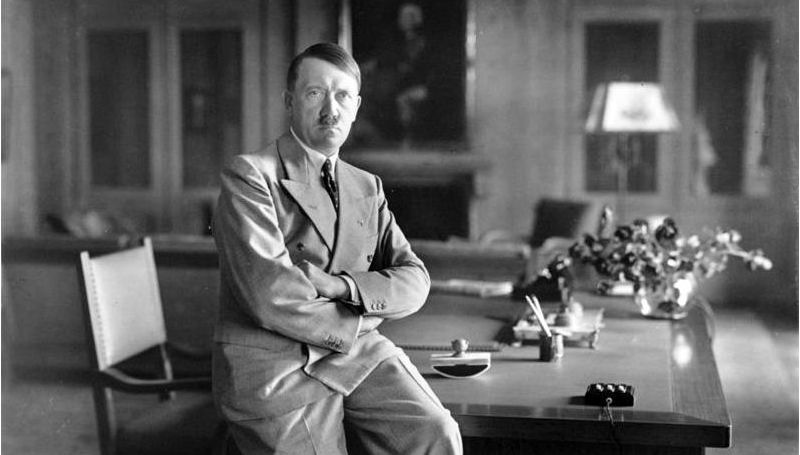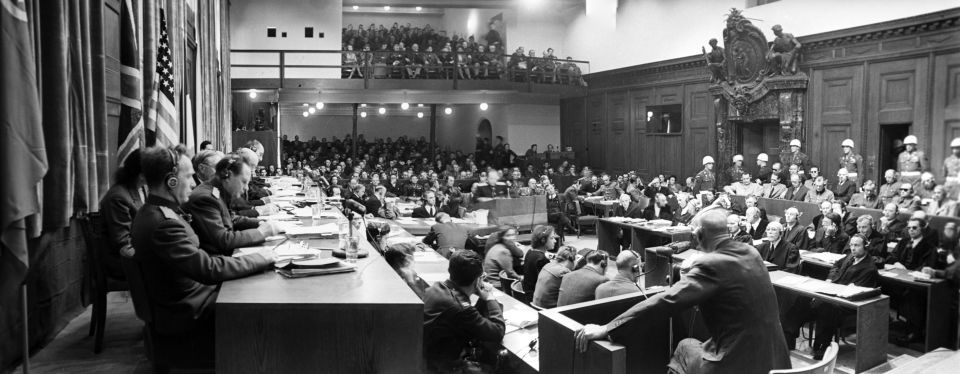On 22 November 1945, American chroniclers were slightly disappointed. The meeting was not as impassioned as they had anticipated. US prosecutors narrated the details of their search for documents of the Third Reich and how evidence for the court had been prepared.
Only some time later did the details of the grand-scale operation to assemble documents for the Nuremberg trials emerge. This story is worthy of a plot to an exciting detective television series.
Seven Hundred People Per Thousand Tons
The Americans hardly had to search for anything deliberately. As the army moved across Germany, papers from the German archives practically rained down on them.
“Often these documents were so numerous that they had to be transported in a large number of trucks to a special storage center,” Colonel Robert Storey, the deputy chief prosecutor for the United States, reported to the tribunal.
"Early last June, Justice Jackson asked me to supervise the collection of documentary evidence on the continent to substantiate the charges by the United States of America. Field teams were organized under the leadership of Major William Coogan, who appointed liaison officers at the main army document collection centers. Literally hundreds of tons of enemy documents and records were sorted, scanned, and selected for shipment to Nuremberg".
As part of each US Army unit, special services were created to "work with documents." They were tasked with reading and describing tons of papers, selecting from them what could serve as evidence in court, photographing the documents and translating them from German, all of which had to be carried out in a matter of weeks.
Subordinate to Colonel Storey, a team of 700 army lawyers surveyed 100,000 documents. By the end of September, the Americans had selected 1,900 documents for the court, but only 500 had yet been thoroughly analyzed, and only 600 had been translated from German. Open hearings were approaching and time was running out. November came, and an additional 40 typists were hired. In the two weeks before 20 November, less than half of the documents - evidence for the trial - were ready. Throughout the Nuremberg Trials, the documentary department of the American prosecution continued to process German archives. By the end of the trial, the number of documents used by American prosecutors in Nuremberg stood at 2,500. Of these, only several hundred were presented to the tribunal as evidence.
How German Archivists Surrendered the Third Reich
In 1944, Berlin ordered army and civilian departments to destroy archives in the event of the likelihood of their capture by an enemy. As one British historian put it, the German archivists had to strike a balance between conscience and the habit of following orders. Germans, according to some, turned out to be better archivists than soldiers, so attached to their entrusted treasures that they often defected to the enemy so as not to part with folders of important historical information.
A huge archive of the Luftwaffe was discovered in alpine hiding places and was transported to London, together with the official historian of the Luftwaffe, who enthusiastically continued his work in the enemy capital. The chief archivist of the Foreign Ministry of the Third Reich presented state property entrusted to him by Berlin to the Anglo-American Commission and personally supervised the packaging and transportation of documents weighing some 485 tons. This wealth of data was carried by Italian prisoners of war. The secret documents, at his own initiative, were handed over by the assistant to Hitler's chief translator. Among other things, the Americans obtained a complete collection of the Fuhrer's negotiations and correspondence. Two and a half tons of photographic materials were personally sorted for the allies by their creator and curator - Hitler's chief photographer, Heinrich Hoffmann.

The naval archive was moved to Hamburg in 1943, to save it from bombs raining down on Berlin. A surprising coincidence - the very next day a bomb hit the now-vacated Berlin building. After the evacuation to Hamburg, archive personnel received an order: in case of danger, unload the documents into an empty pool, fill it with firewood and burn it. Firewood and gasoline were provided. But how could dedicated archivists commit what was to them a sin? To be expected to burn archives containing documents dating back to the middle of the 19th century...it could not be done. Moreover, during the wartime winter, firewood and gasoline were costly and in high demand. Of course, the archivists balked. Furthermore, the command was on their side - Admiral Karl Dönitz demanded that the archives be given to the Americans. (This helpfulness did not save him from the Nuremberg dock.)
Another future defendant - the Minister of Armaments, and Hitler's favorite architect, Albert Speer - personally came to the Americans bearing a gift: he transferred to them all the documents at his disposal pertaining to military production.
Not all Nazi leaders were as accommodating.
In the last stages of the war, documents were found in salt mines buried in the ground, behind fake walls and in many other places that the Germans considered reliable, reported prosecutor Robert Storey to the Tribunal. For example, the personal correspondence and diary of defendant Rosenberg, including his correspondence on Nazi Party affairs, were found behind fake walls of an old castle in Eastern Bavaria.
In Flensburg, the archives of the Supreme High Command of the Ground Forces were captured. Among the documents was the famous directive number 21, the "Barbarossa plan". In the basement bunker of Hitler's residence in the Bavarian Alps, they found the archive of Hitler's adjutant Schmutz, containing the plan of Operation Grün to capture Czechoslovakia. In the basements of the state bank in Cologne, they found letters from industrialists addressed to Heinrich Himmler, epistles that implicated them in the crimes of the Nazi regime. Military detectives obtained the personal archives of future defendants Franz von Papen and Horace Greeley, Hjalmar Schacht, a German economist and banker, as well as forty volumes of the diaries of Hans Frank, who later claimed that he gave them up personally.
Frederick the Great's coffin
There was so much material that confusion ensued. In the port docks of Antwerp, Belgium, tons of unidentified papers lay gathering dust for a month until the Autumn - there was no officer on hand authorized to study them. When their turn to be scrutinized finally arrived, it turned out that this was the archive of the German army. In September, in a garbage heap on the outskirts of Munich, someone stumbled upon a mountain of similar-looking pieces of paper - they had been simply thrown away, not deemed valuable, and were about to be disposed of. American military lawyers swooped in just in time to identify the pile as the Nazi Party's card index, containing 9 million membership cards.
The Americans brought a large number of collected documents to the castle in Marburg. This episode of Marburg history inspired locals to create urban legends. Allegedly, one day an American soldier drove an abandoned truck with three boxes in the back to the castle. The warehouse staff opened the boxes. There were three coffins. In the coffins lay Reich President of the Weimar Republic, Paul von Hindenburg (died in 1934), Frau Hindenburg (died in 1921), and the Prussian king, Frederick the Great, who died in Bose in 1786.
It was not only Robert Jackson's apparatus that was interested in a speedy systematization of German archives. Politicians, military officials and intelligence officers perceived this wealth of data primarily as a source of classified information. Often, conflicts arose out of service jealousy between these institutions and between similar departments of allied countries. There was talk that the interrogations and testimonies were enough to convict 24 criminals, and Jackson was wasting time and public funds procrastinating over the documents. In court, interrogations offer up a much more effective spectacle than the reading of documents. However, the American prosecutor was adamant. For him, the Nuremberg trial was, albeit unusual, not the first of its kind, but nevertheless a criminal investigation and a court trial, one of many. Jackson sought to make history.
























